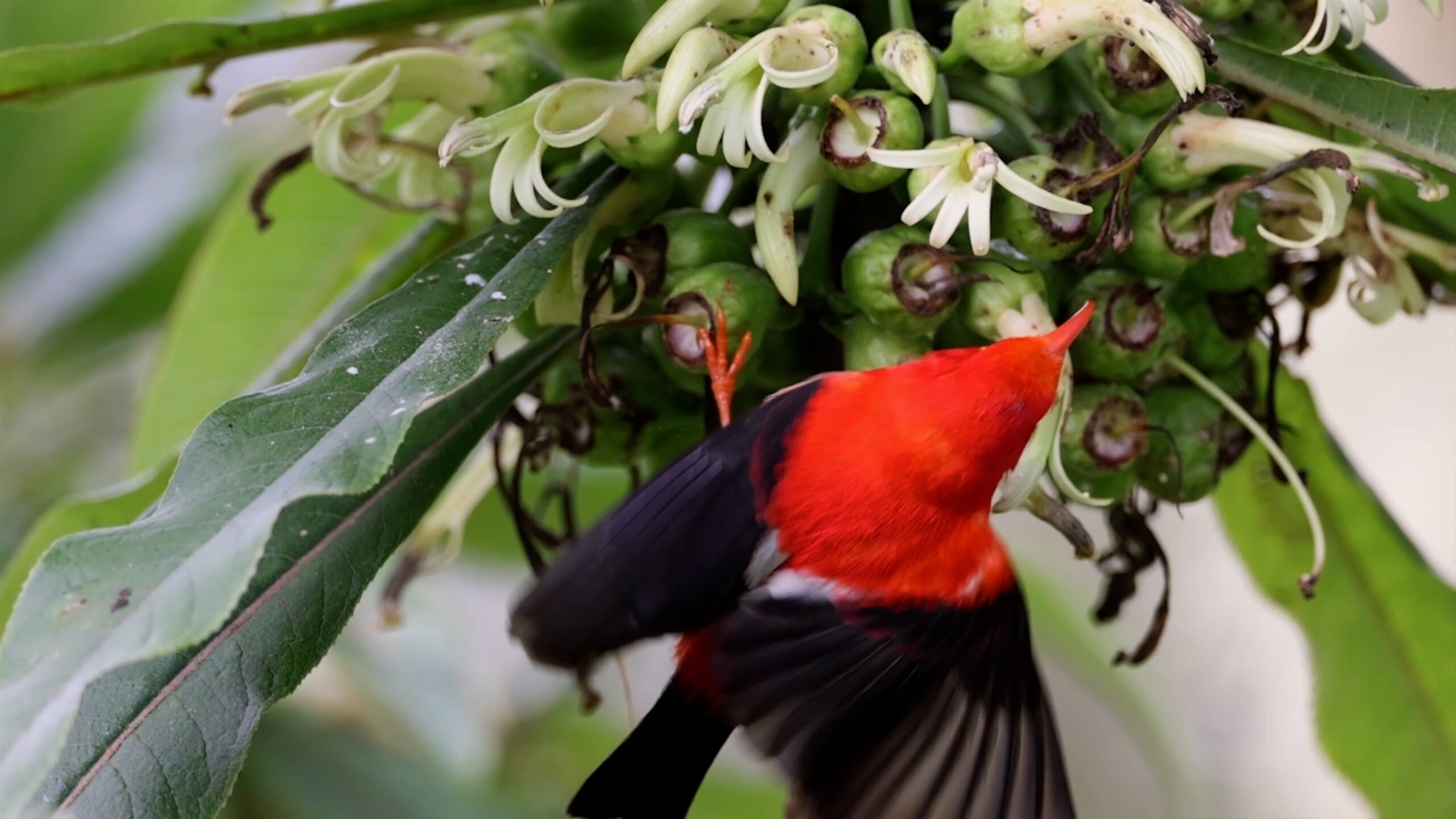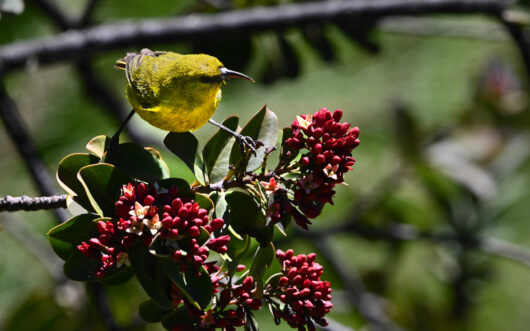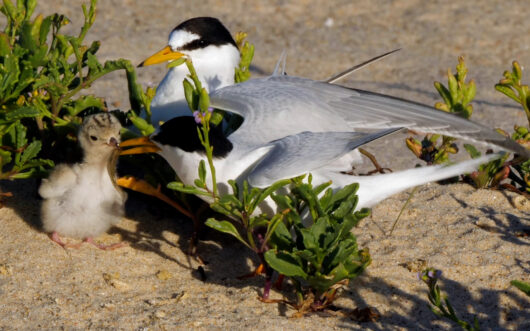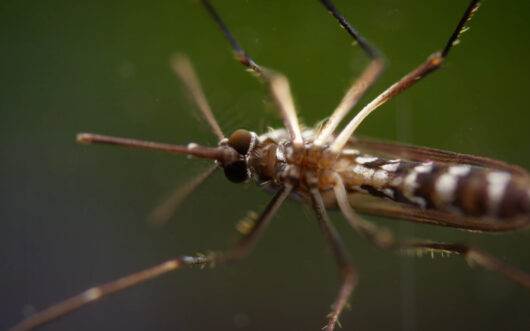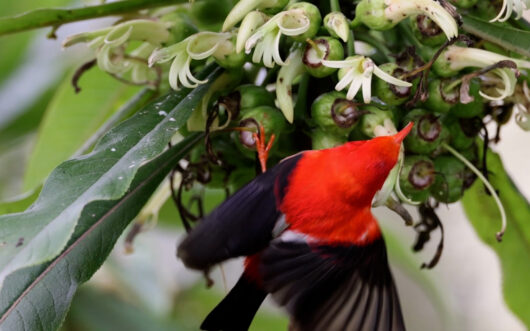Bring birds, biodiversity, and conservation science into your classroom.
Explore how conservation biologists in Hawai‘i are racing to save the last honeycreepers from extinction by restoring habitats and tackling avian malaria through innovative mosquito control. This educator guide supports classroom discussion, NGSS-aligned learning, and hands-on opportunities for student engagement.
GRADES
9 – 12+
SUBJECTS
Biology, Storytelling, Ecology
Episode Overview
“We’re at the precipice of having a tool to address avian disease. All the work we’re doing has really invigorated us and given us a type of hope that we haven’t had in decades.” – Christa Seidl, Disease Ecologist and Conservation Biologist at the University of California, Santa Cruz
At least 51 species of honeycreepers used to thrive on the Hawaiian archipelago, but introduced invasive species, human development, and avian malaria have driven two-thirds of the species to extinction. Only 17 species of Hawaiian honeycreepers remain and 11 of them are listed as endangered species. Fortunately, conservation biologists and disease ecologists like Christa Seidl and ornithologist Laura Berthold of the Maui Forest Bird Recovery Project have initiated a coordinated and hopeful effort to restore and protect lost habitat and they are helping employ a unique method for reducing the populations of disease-carrying mosquitoes.
Focus Questions
- Why are island ecosystems so vulnerable to introduced invasive species?
- How did 51 different species of Hawaiian honeycreepers end up on the Hawaiian archipelago?
- How are scientists using a unique reproductive phenomenon in mosquitoes to depress the populations of the mosquito species that carry avian malaria?
Key Concepts
- Threatened and Endangered Species: The International Union for the Conservation of Nature lists more than 45,000 species threatened with extinction, and 41% of the animals on this list live and/or breed on islands. Introduced invasive species, habitat loss, and disease are the primary drivers of this crisis.
- Natural selection: The immense diversity of habitats on Earth have helped drive the evolution of the planet’s organisms primarily through the process of natural selection. Like the finches of the Galapagos Islands, the honeycreepers of the Hawaiian archipelago are an example of nature sifting through variation among individuals and producing more than 50 species of honeycreeper that once thrived on the islands.
- Adaptive radiation: A common pattern of evolution is adaptive radiation where several species evolve quickly from a single ancestral lineage. The Hawaiian honeycreepers likely evolved into dozens of species from a single population of finch-like birds that migrated to the newly formed volcanic islands of Ni’ihau and Kauai around 6 to 7 million years ago.
- Biodiversity: Even though islands make up only about 6.7% of the Earth’s landmass, they harbor a disproportionate 20% of the Earth’s biodiversity. Unfortunately, 75% of all recorded extinctions that have occurred since human civilization have occurred on islands and 50% of island plant and animal species are listed as endangered.
- Mutualistic symbiosis: The Hawaiian honeycreepers play an important role in the island ecosystems as mutualistic symbionts with plants. Not only do the honeycreepers assist many island plants with pollination while harvesting nectar, they also help disperse the seeds of many plant species and protect them from herbivory by eating their insect enemies.
- Reproductive ecology: Scientists are using a unique reproductive phenomenon in mosquitoes to depress the populations of the mosquito species that carry avian malaria.
- Conservation biology: The practice of conservation biology recognizes the intrinsic value of the Earth’s natural diversity of organisms. Conservation biology works to understand how the natural world operates, how humans affect nature, and how we can use collective scientific and cultural knowledge to conserve Earth’s biological diversity.
Curriculum Connections
NGSS
- HS-LS2 Ecosystems: Interactions, Energy, and Dynamics
- LS2.A: Interdependent Relationships in Ecosystems
- LS2.C: Ecosystem Dynamics, Functioning, and Resilience
- LS4.D: Biodiversity and Humans
- HS-LS3 Heredity: Inheritance and Variation of Traits
- LS3.A: Inheritance of Traits
- LS3.B: Variation of Traits
- HS-LS4 Biological Evolution: Unity and Diversity
- LS4.A: Evidence of Common Ancestry and Diversity
- LS4.B: Natural Selection
- LS4.C: Adaptation
- ETS1.B: Developing Possible Solutions
For complete list of curriculum connections including AP & IB standards, refer to full PDF.
